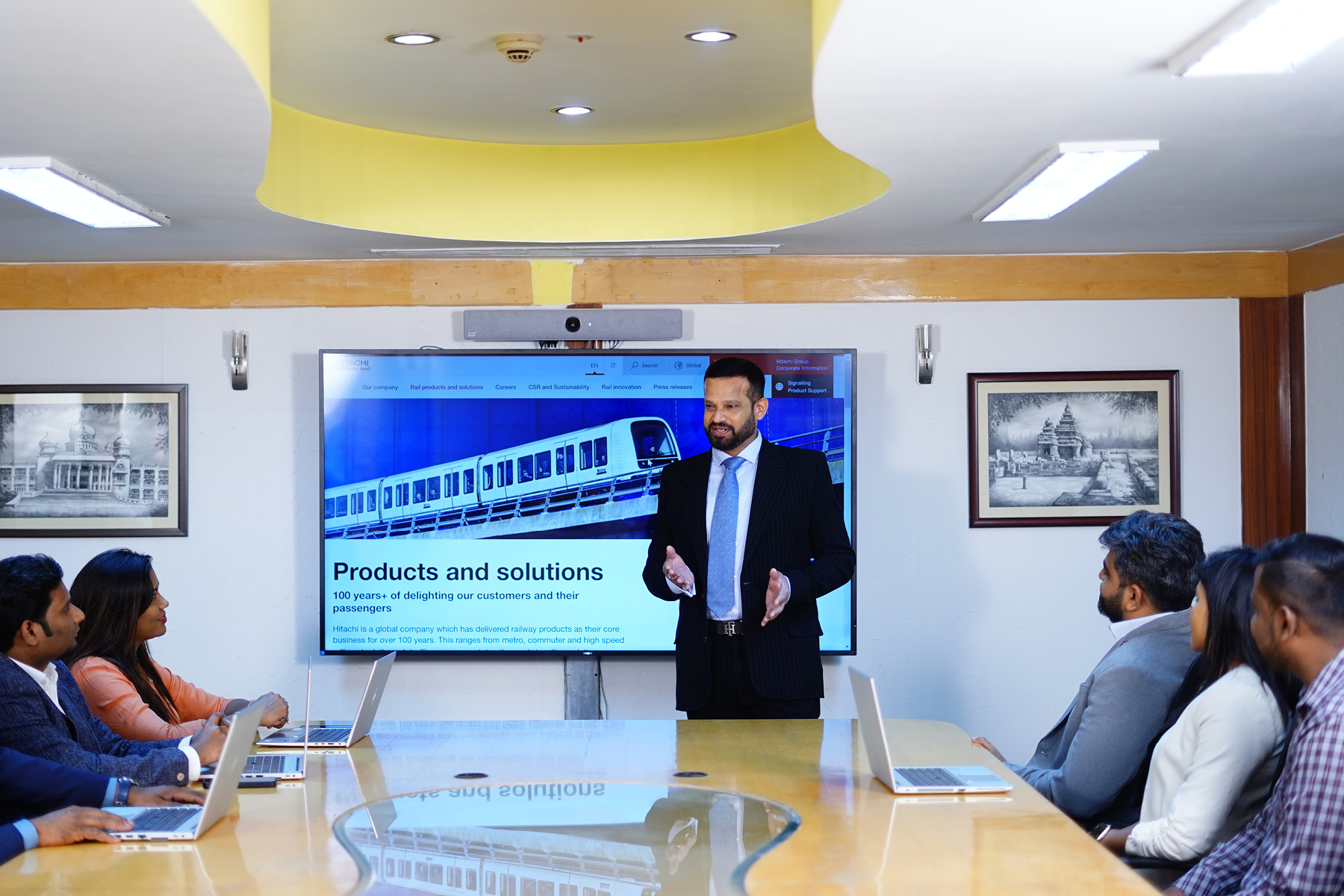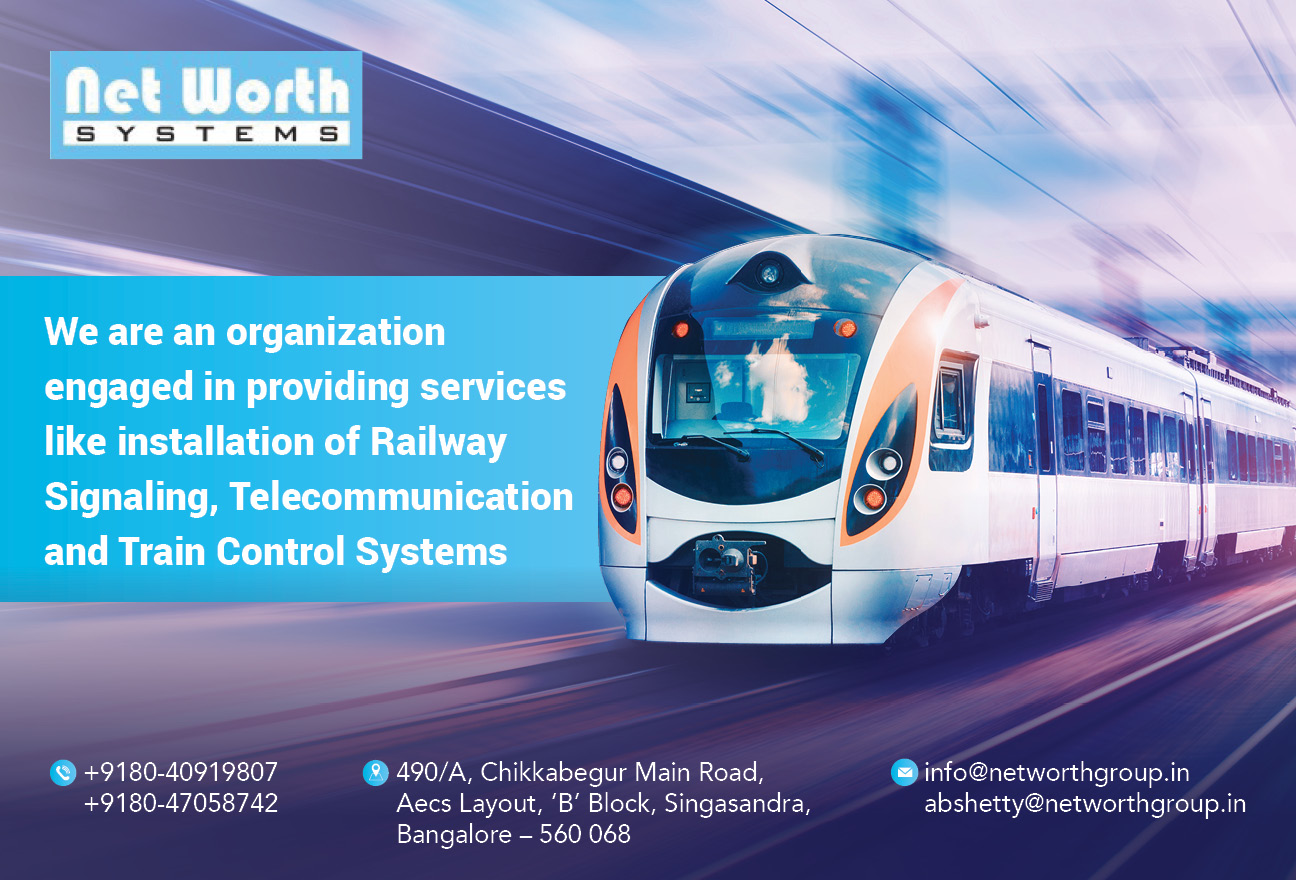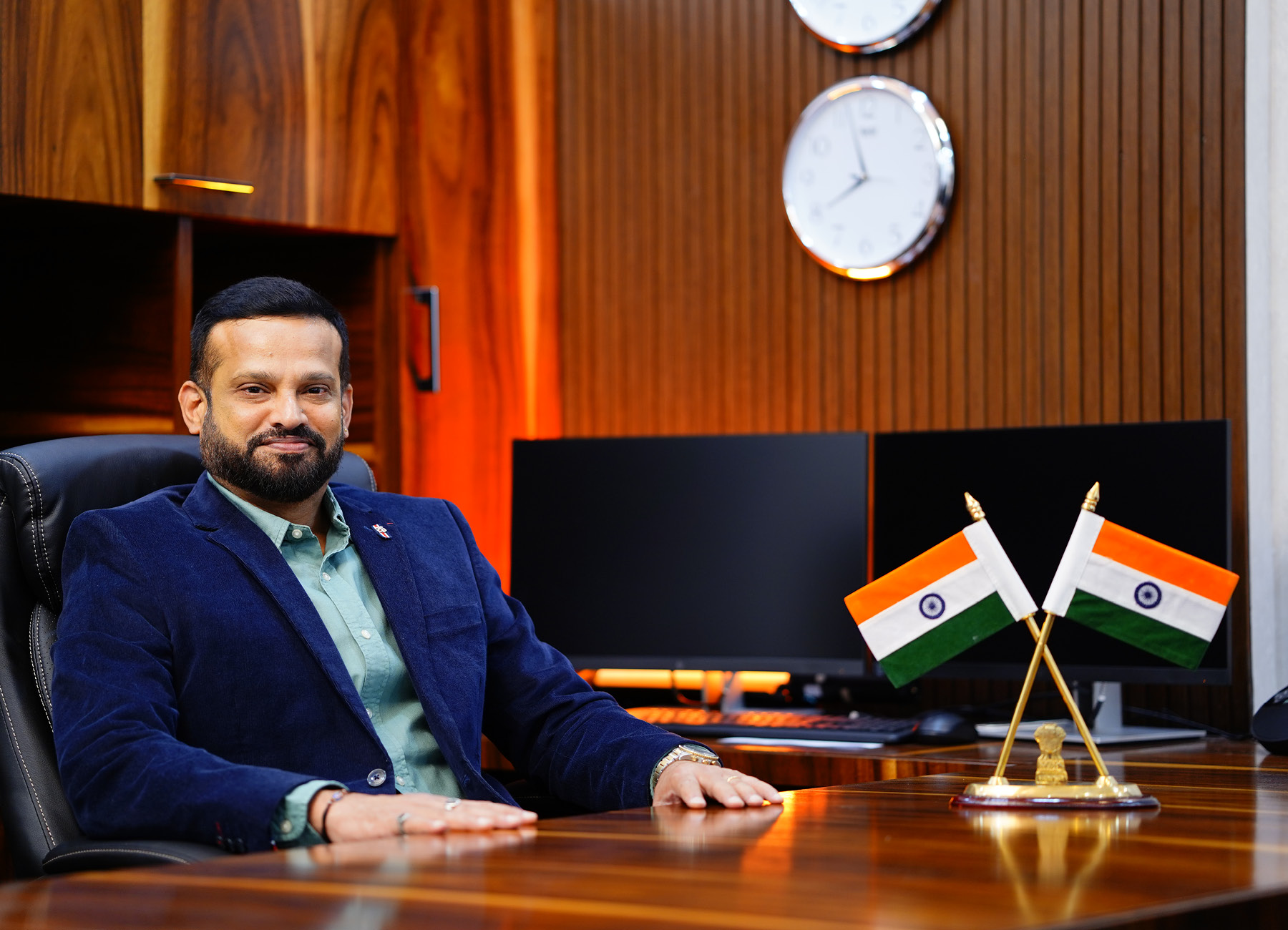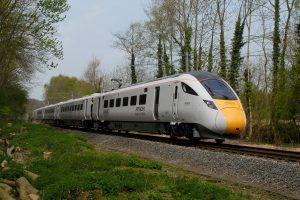Language
You can read the magazine in one of the following languages
As the world amends its old ways in service of a more sustainable future, one of the biggest jobs is the overhaul of rail networks. Already, there are stretches of track at truly incredible lengths and hundreds of thousands of carriages all reliant on electricity that must be cleansed if rail is to thrive in the 21st century.
Greenwashing is nothing new to trains, of course. When people think of coal, the first image that often comes to mind is the old American steam engine driver shoveling coal into a furnace. These days, coal is more likely found in the rail cars rather than in their engines, but Santa’s punishments remain a key generator of electricity for rail networks.

“Hitachi has pledged itself to be carbon net zero by 2030.”
And perhaps nowhere will this job of cleaning up rail’s environmental transgressions be more formidable than in India. The International Energy Agency predicts that the country will account for nearly 40 percent of the world’s total rail activity by 2050, coincidentally the year when much of the world has pledged to reduce its carbon footprints.
Petrol-powered cars are being phased out by the automotive industry in favor of electric vehicles, and it’s a similar story for rail. Indian Railways has already made the decision to replace its entire fleet of internal combustion engines with electric options in an effort to reach net zero by 2030.
India is also one of the biggest global exporters of railway infrastructure and rolling stock, meaning whatever footprint it has goes far beyond the nation’s borders. That’s quite the clean-up job, and Hitachi Rail STS India has an important role to play in the solution.
The company is one of many to have set 2050 as the year CO2 emissions throughout its entire value chain hit zero. That’s a challenge to be sure, but Director and Head of Hitachi Rail STS India, Manoj Kumar Krishnappa, who goes by the name Manoj, is used to those. “Hitachi Rail has a lot to say about what we’ve done in India,” he says.
The list of industry firsts Hitachi Rail is responsible for is impressive. They were the first to introduce electronic interlocking on Indian railways in 2002 as well as train protection warnings. It also introduced the Mumbai Monorail and complete a metro project in 24 months (the 29-kilometer Noida Metro).
Hitachi Rail also completed a centralized traffic control project (the only such project in India) and introduced the semi-high speed Indian train – the Gatimaan Express – from Delhi to Agra, which runs on Hitachi technology.
And that’s all just in the company’s recent history. Hitachi Rail’s legacy dates back to 1853, when it was founded as engineering firm Gio. Ansaldo & C. in Italy. Through a series of mergers and acquisitions, the business came to be known as Ansaldo STS, and was responsible for a number of innovations in the industry, particularly in the realm of high-speed rail.

In 2019, Ansaldo STS was bought out by Japanese conglomerate Hitachi, a move that affected the company’s offices around the world. And although the name may have changed, the innovations have continued.
“When I first joined the company in 2010, they were known only for railway signaling,” Manoj says. “Since then we’ve won four metro projects for Hitachi Rail, we’ve partnered with L&T, taken on the enormous Riyadh Metro project and executed Asia’s largest electronic interlocking network with 800 routes. Recently we bettered that record at Juhi Yard in Kanpur with 973 routes.”
The company’s achievements have taken it far beyond India. In late 2022, Hitachi Rail won a contract to enhance railway lines in the Philippines with digital signaling. In Australia, Hitachi Rail’s implementation of the AutoHaul project – a driverless method of long-distance heavy freight – in collaboration with technology firm Rail Vision and mining giant Rio Tinto, continues in Western Australia’s Pilbara region.
“I feel overwhelmed when I share highlights of our accomplishments,” Manoj says. “What we’ve achieved in 25 years has made us one of the leading and most credible organizations in the sector today. It’s safe to say we’re very proud of our legacy.”
And with the company quickly becoming a climate change trailblazer, that legacy will only improve with time.
Hitachi Rail is committed to growth through the business of social innovation. That means providing safe, comfortable and environmentally friendly transportation solutions that accelerate the concept of smart mobility in India. The business has some of the strictest targets in the industry when it comes to achieving carbon neutrality by 2030, and has demonstrated its commitment by becoming a Principal Partner of the 26th United Nations Climate Change Conference in Glasgow in 2021.
“We want to reduce our carbon footprint,” Manoj says. “At the global level, Hitachi has pledged itself to be carbon net zero by 2030. We’d also like to implement that across Hitachi Group companies in India, and to help the Indian government to achieve that as early as possible in line with its own vision, so by 2050.”

“I love challenges. I love to win.”
Hitachi Rail’s metro lines, in particular, have become exemplars of the company’s commitment to this cause. The company’s Noida Metro is a perfect example, realized as it was in 28 months with energy-efficient technology built into its 21 stations and just under 30 kilometers of track.
“If you see today, most of the metros run on green energy,” Manoj says. “Metros have become a lifeline for every citizen of India. Every tier-two city has a metro, and any government trying to win over the people would first and foremost come up with a metro.”
That’s because metro lines make getting around quicker and cheaper, particularly in a country with the expanse and population of India. “Metro eases the strain on any city’s transportation,” he says. “Connectivity, particularly to airports, means it’s much easier for people to commute.”
Hitachi Rail was recently awarded a letter of acceptance for one of the country’s biggest rail projects, the 120-kilometer Chennai Metro. The plan involves the implementation of both Hitachi Rail’s state-of-the-art communication-based train control (CBTC) system and automatic train operation (ATO), allowing for a safe and cost effective driverless experience.
“I’d say it’s one of the biggest metro projects in the world,” Manoj says. “For us, the value is roughly 1,660 crore rupees [US$200 million].”
The tender joins several other large projects Hitachi Rail has in the pipeline, but Manoj says the company is careful to never over-extend.
“We look for projects that are good for us,” he says. “They can be completed on time, and they’re very much a necessity. In the future, we’re looking to win a few more.”
Today, Hitachi Rail is the third largest of its kind in terms of order bookings and projects. “In the next three-to-five years, we’d like to see ourselves at the top of that list,” he proclaims.
Manoj’s drive to succeed by taking the company to number one comes in some part from his background in sports. A former cricketer, Manoj played for Karnataka before joining the aerospace domain as a software engineer. There, he worked on advanced light helicopters and light combat aircraft, Indian-made fighters that have since been shipped to other countries.
“I love challenges. I love to win,” he says. “I took up an opportunity to work with what was then Ansaldo STS India, which at the time was doing a lot of work with electronic interlocking and modernization of signaling.”
But Manoj’s arrival in 2010 signaled a change in direction. Admiring the success with metro lines that Hitachi Rail’s competition had enjoyed, he believed his company could do things better.
“In my first year, we won the tender for the Kolkata Metro’s new line,” he recalls. “After that it was the Navi Mumbai Metro, the first turnkey project in India.”
His success made Hitachi Rail sit up and take notice. Soon, Manoj was given the opportunity to work on mainline projects beyond the metros.
“Be it luck or the hard work I put in, we were able to do some amazing work with Indian Railways,” he says. “Kharagpur Station features one of Asia’s largest electronic interlocking networks thanks to us, and it was hailed by former Railways Minister Suresh Prabhu and Prime Minister Narendra Modi as one of the flagship projects.”
Hitachi Rail’s work for the North Central Railway was an even greater triumph, he says proudly. “We bettered our own record.”
At the same time, Manoj has progressed well beyond the role he originally occupied within the Hitachi Rail organization. “Two years ago, I was Head of India Operations, Sales and Projects,” he says. “Today I’m the Whole Time Director, Head of Rail Control Business.”
A typical day for the Whole Time Director looks quite different from anyone else’s. For starters, Manoj’s quarry is a beast that never sleeps.
“The wheels of the trains move 24/7, and we’re the people responsible for keeping them moving,” he says. “Our offices work 24 hours a day, 365 days a year. You never see it closed, and that’s because we cater to the very important lifeline of our country. We have to keep it moving without any hitches.”
More than anything else, this is done for safety reasons. “We’re moving passengers, so we have to make sure they reach their destination safely,” he says. That requires constant monitoring, meaning Manoj’s weekends are rarely his own.

“Our offices work 24 hours a day, 365 days a year. You never see it closed, and that’s because we cater to the very important lifeline of our country.”
“You have to take the calls if something goes wrong, no matter when that is,” he says. “You have to make sure things are OK. If Indian Railways reaches out to me, as the top point of call in management, I can then talk to my team and get them on the case. So while I’m at my desk, it’s very hectic. I have to respond to each and every call received from clients.”
It’s Manoj’s way of satisfying his own needs in the business world. “It’s important to me to be part of something bigger than myself,” he says. “I seek out ways to contribute to important projects that provide me with a sense of ownership both in my own work and my overall work environment. Making an impact in this industry and in customers’ lives is motivating.”
When there is downtime, the ex-cricketer spends it as you might expect. “I still play,” he says. “I played at all levels for my state and for India, so you never really let it go. I love family holidays, walking with my wife and watching the horse racing as well.”
Ironically, Manoj’s own commute doesn’t involve the metro. “We’re moving to a new office that’s closer to the metro station, so that’s on the horizon,” he says. “But sorry to say I have to drive to work. I’d be happier on the train.”
It all comes down to Manoj’s desire to succeed on a grand scale. “When I first arrived, I wanted to prove myself,” he says. “I could achieve something big for this organization. Once I’d tasted success, I wanted to stay on top. I have to say, you have to always be greedy when you want to grow and achieve.”
Confidence like this is important to develop. “Confidence leads to productivity at work, it helps you effectively communicate your ideas in the workplace. At the same time, remain humble and accept that you’ll not always be the one who knows everything,” he says.
There’s perhaps no greater growth than being a part of a government’s vision for its country, which is precisely what Manoj has achieved in the last two years.

“I’ve seen the Indian government’s vision of the physical transformation of Indian Railways, which is the world’s third-largest rail network. Through their vision and groundbreaking processes, the government has ensured India traverses this millennium on a high note,” he says.
“From a developing geography, we’re progressing towards a developed economy. They’ve moved toward operations technology and information technology, and they’re well geared up to meet those needs.”
With safety a hot topic in the industry, the government has pushed forward with electrification and signaling projects based on edicts from the Prime Minister’s office. “Hitachi is fully geared to provide solutions toward achieving sustainable, affordable and safe transportation across the country,” he says.
“Through our next-generation mobility solutions, we’re ensuring we go beyond our imagination and meet the government’s vision. I’m sure we’ll see a different country going forward as far as the railway sector is concerned.”
Taking on this challenge is Manoj’s team of more than 300 full-time workers and another 300-plus contractors.
“Working with a team and collaborating with other employees is a central part of most jobs,” Manoj says. “You have to do your best to work with the team, not against them. Many great things can be accomplished by working as a unit. It’s essential for the success of a business.”
At Hitachi Rail, much of the load is carried by functional heads, or business leaders. “Each function head takes on responsibilities such as engineering, safety, construction. There’s a bit of pressure involved, but we manage it in the best possible ways,” he says.
Hitachi is itself an enormous global conglomerate, and its size means the subsidiary Hitachi Rail is rarely concerned about what the competition is up to.

“We follow values of sincerity and harmony to keep ourselves level, but we don’t compromise on quality or safety.”
“We have our own vision, our own missions,” Manoj says. “Internally, we follow values of sincerity and harmony to keep ourselves level, but we don’t compromise on quality or safety.”
These values are particularly important as far as Hitachi Rail’s sustainability commitments are concerned. “In India and across the world, we’re helping to decarbonize the mobility sector in a very big way,” he says.
“And we’ll achieve this by creating a new benchmark for India’s urban transportation system. We aspire to power good at Hitachi Rail, to build a sustainable society.”
But as large as the company is, it doesn’t work alone. Hitachi Rail has a large network of suppliers, contractors and support staff that Manoj believes forms the foundation of the organization. “We have longstanding contractors and partners who’ve been associated with us for the last 25 years,” he says. “They see added value in working with Hitachi Rail.”
Some take on a sizable amount of responsibility as a result. “For our metros we have partnerships with companies like Belden, Motorola and Socomec,” he says. “It helps, because when you have these different technologies married together, you can execute the project in a much smoother way.”
Decarbonizing India’s transportation system is Hitachi Rail’s most important destination, and Manoj says it’s full steam ahead.
“We’re charting the way forward,” he says. “As part of India’s evolving social infrastructure and digital revolution, we need a new and more relevant focus on green mobility.”
Hitachi Rail is taking that lead on all fronts, he adds. “We’re advocating more sustainable, futuristic urban mobility in terms of public transport, freight movement, rail-based mass transport and light transport,” he says.
“Railways are the lifeline of India, and this lifeline is set to grow stronger through the fusion of digital innovations, green technologies and innovation. These are some of the areas where India is progressing rapidly, and we at Hitachi Rail are at the helm of affairs to deliver secure, seamless rail journeys to millions of citizens.”

